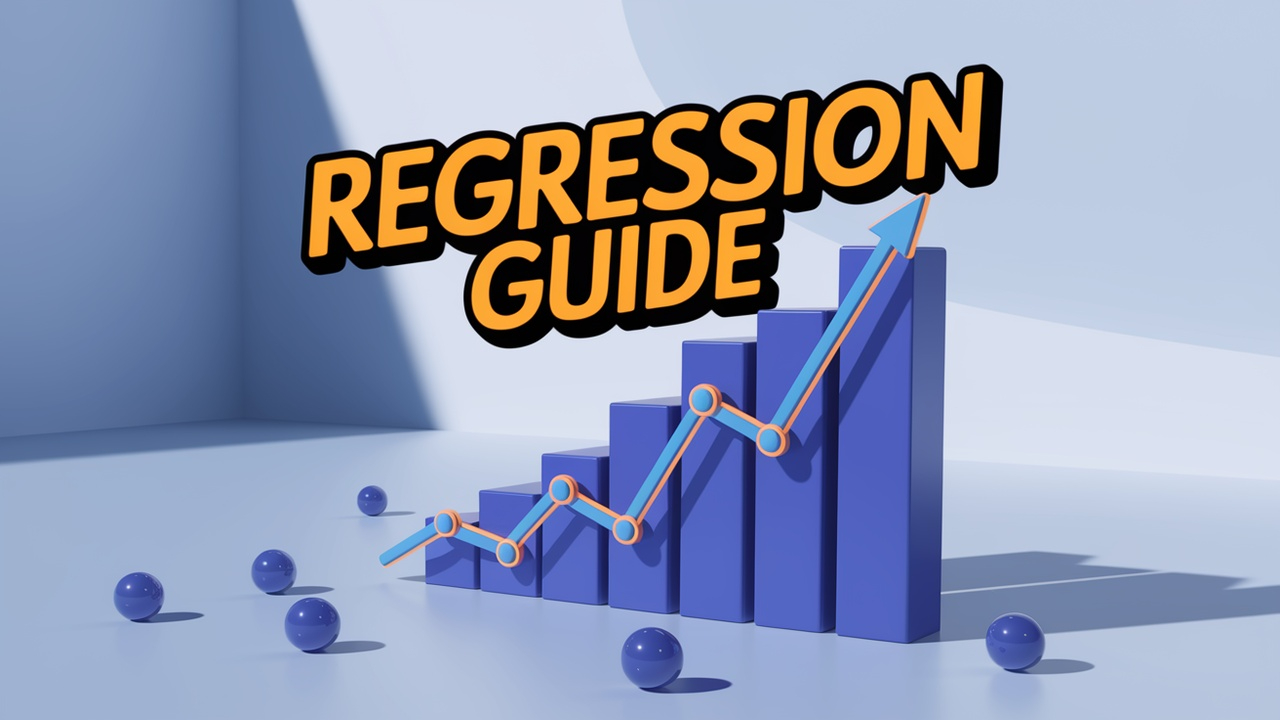
This comprehensive course on Regression Techniques covers the fundamentals of regression analysis, including concepts, methods, and applications. Participants will learn how to build, evaluate, and interpret regression models, enabling them to apply these techniques in real-world scenarios.
Course Levels
-
Level 1: Introduction to Regression
In this level, students will be introduced to the basic concepts of regression analysis, its significance, and key terminologies.
-
Level 2: Simple Linear Regression
This level focuses on understanding simple linear regression in depth, including how to fit a model and interpret its results.
-
Level 3: Multiple Linear Regression
Students will learn about multiple linear regression, its applications, and how to handle multiple predictors in a regression model.
-
Level 4: Advanced Regression Techniques
This level covers advanced regression techniques, including polynomial regression and interaction terms, alongside their applications.
-
Level 5: Regression Diagnostics and Assumptions
Students will explore the assumptions underlying regression models and how to diagnose potential issues.
-
Level 6: Regression in Practice
This level focuses on applying regression techniques to real-world datasets, emphasizing practical application and interpretation.
-
Level 7: Specialized Regression Techniques
Students will delve into specialized regression techniques, such as Ridge and Lasso regression, suitable for specific data scenarios.
-
Level 8: Time Series Regression
This level covers regression techniques tailored for time series data, focusing on trends, seasonality, and forecasting.
-
Level 9: Machine Learning and Regression
Students will explore the intersection of machine learning and regression techniques, including model comparison and advanced algorithms.
-
Level 10: Capstone Project
In this final level, students will apply all the knowledge gained throughout the course to a comprehensive capstone project.
Course Topics
-
Introduction to Regularization Techniques
# Introduction to Regularization Techniques In the field of regression analysis, overfitting is a significant challenge that can lead to poor predictive performance on unseen data. Regularization tec...
-
Influential Data Points and Outliers
# Influential Data Points and Outliers In regression analysis, understanding the role of influential data points and outliers is crucial for building robust predictive models. These terms refer to ob...
-
Collinearity and Its Effects
# Collinearity and Its Effects Collinearity, also known as multicollinearity in the context of multiple linear regression, refers to a situation where two or more predictor variables in a regression ...
-
Case Study: Predictive Modeling
# Case Study: Predictive Modeling Predictive modeling is an essential application of regression techniques that allows organizations to forecast future outcomes based on historical data. This case st...
-
Autocorrelation and Its Effects
# Autocorrelation and Its Effects Autocorrelation, also known as serial correlation, is a fundamental concept in time series analysis and regression techniques. It occurs when the residuals (errors) ...
-
Basic Terminology in Regression
# Basic Terminology in Regression In this section, we will explore fundamental terms and concepts that are essential for understanding regression analysis. Whether you are a beginner or brushing up o...
-
Homoscedasticity vs. Heteroscedasticity
# Homoscedasticity vs. Heteroscedasticity In regression analysis, two key concepts that are crucial for validating the assumptions of linear regression models are **homoscedasticity** and **heterosce...
-
Dummy Variables in Regression
# Dummy Variables in Regression Dummy variables are a crucial aspect of regression analysis, particularly when dealing with categorical data. In this section, we will explore what dummy variables are...
-
Regression with Time Series Components
# Regression with Time Series Components ## Introduction Regression analysis is a powerful statistical method that allows us to examine the relationship between one dependent variable and one or more...
-
Support Vector Regression
# Support Vector Regression Support Vector Regression (SVR) is a powerful technique within the field of machine learning, particularly useful for regression tasks. It is based on the principles of Su...
-
Interpreting Regression Coefficients
# Interpreting Regression Coefficients ## Introduction In simple linear regression, the relationship between a dependent variable and an independent variable is described by a linear equation. The co...
-
Assessing Model Fit: R-squared
# Assessing Model Fit: R-squared ## Introduction R-squared, also known as the coefficient of determination, is a statistical measure that represents the proportion of the variance for a dependent var...
-
Project Proposal and Planning
# Project Proposal and Planning ## Introduction In the context of data analytics and regression techniques, crafting a robust project proposal and planning is essential for the successful execution o...
-
Forecasting with Regression Models
# Forecasting with Regression Models Forecasting is a crucial aspect of data analysis, particularly in fields such as economics, finance, and environmental studies. Regression models serve as powerfu...
-
When to Use Specialized Techniques
Learn about this topic in the course
-
Regression Trees and Random Forests
# Regression Trees and Random Forests ## Introduction Regression Trees and Random Forests are powerful machine learning techniques used for predictive modeling. They are particularly useful when dea...
-
Residual Analysis
# Residual Analysis Residual analysis is a crucial step in evaluating the adequacy of a linear regression model. It involves examining the residuals, which are the differences between the observed an...
-
Model Selection Techniques
# Model Selection Techniques Model selection is a critical step in the process of building effective predictive models, especially in the context of multiple linear regression. The goal of model sele...
-
Neural Networks for Regression Tasks
# Neural Networks for Regression Tasks Neural networks have revolutionized the field of machine learning, particularly in the realm of regression tasks. Unlike traditional regression models such as l...
-
Introduction to Simple Linear Regression
# Introduction to Simple Linear Regression ## What is Simple Linear Regression? Simple Linear Regression is a statistical method used to model the relationship between two continuous variables. It a...
- And 30 more topics...